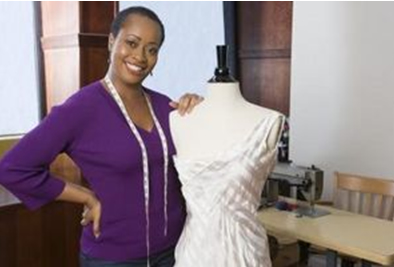When a designer creates a garment, there is a stage called draping. Draping entails a period of work with muslin (or fashion fabric) during which the designer manipulates and works the fabric into the desired look. Used since the beginning of clothing construction, draping can render simple, flat looks or ornate, detail-rich touches. However, it's an intricate art that requires much study, if not college-level schooling.

History
Draping is the most basic design technique in fashion. Most early clothing was constructed from simple seams and draped materials, and not from the patterns we use today. A basic draped design is the Roman toga, which is a simple sheath of fabric moved and gathered around the body and held by a belt. Another draped piece is the Scottish kilt, a long piece of rectangular plaid wool that is pinned, pleated and folded.
Significance
Draping is an important part of fashion design. Without it, the designer doesn't know how a particular piece of fabric will hang, accept a seam or crease on the body. Draping also creates those interesting three-dimensional touches that make garments special---pleats, gathers and flounces all come from creative draping techniques. Some talented designers can even create an entire dress from one simple, unsewn length of fabric, due to skilled draping.
Learning Draping
Many designers learn draping through trial and error, using a dress form to see a fair approximation of their creative idea. However, a good number also take draping and pattern-making courses in college. Draping comes before pattern making, with the pattern maker working the different design attributes into the paper pattern pieces for mass production. After all, it would be incredibly labor-consuming to drape each garment before it is sewn.
Considerations
According to Kimberly of Humming Hearts Ranch, her draping class at the local community college may be summed up in one sentence: "It was brutal." Draping and pattern making is a challenging process that takes a lot of work to perfect. Designers that create interesting features, like hidden, curved zippers, bias-cut bodices and gathered accents use a wide arsenal of skills to move their bust-born concept to something real.
Benefits
Draping created much of modern fashion. In the days before modern garment manufacture, affluent people went to the dressmaker, or draper, for clothing. Without draping, clothing would be very modular, serviceable and boring. It would also be mono-sized, since draping creates the seams and darts that allow for proper fit. For those that wish to learn more about draping, check out the nearest library for books about the art.
Keep in mind that a dress form, and a lot of patience, are necessary supplies.

